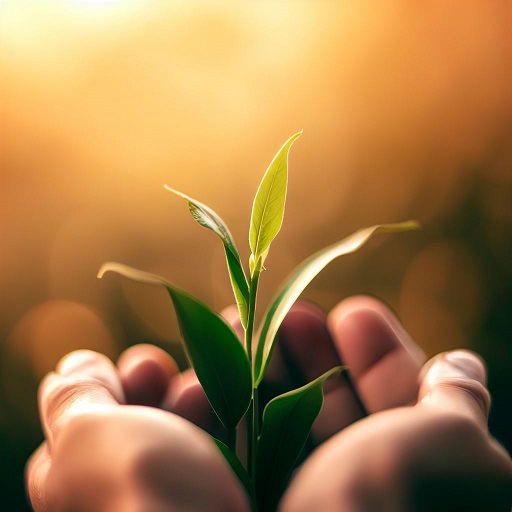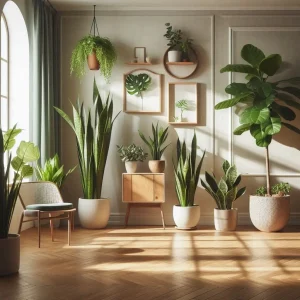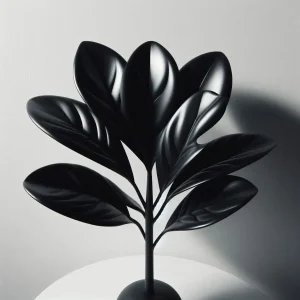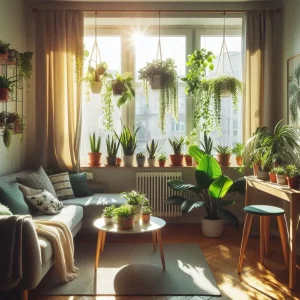When summer comes, vibrancy takes over everywhere. Everyone is struggling and this season makes summer unique. But with the coming of summer, farmers and gardeners have to do something so that their plants can continue their life and this is very vital for them. With the arrival of summer and the start of the hot season, lack of water and dryness threaten the plants and this is harmful for the plants.
We must create conditions for plants so that they can continue their lives in the best way, it needs your protection and responsible of yours.
There is no difference between the cold of winter and the heat of summer. As we mentioned in Tips for Houseplant Care in the Winter, it is important to take special care of houseplants in different weather conditions.
In the summer, due to the very high heat, the soil moisture quickly disappears and evaporates, for this reason, we should reduce the irrigation time and increase the amount of water we give to the plants. This helps the plants to maintain their moisture and freshness.
You can also use the canopy for heat plants, the canopy helps the plants to be safe from the scorching heat of summer, it takes care of your plants during summer.
If there is a tree near you, you can place the plants under the shade of the tree, even if there is no such thing and you cannot move the plants, you can use artificial shadows and canopies.
It depends on you what kind of awning you use, you can even use mobile awnings. Also, you can move your watering to early morning and early night to avoid excessive water evaporation. This is very good for plants. If it is possible for you, you can also use mulches to maintain the soil moisture well, this prevents the soil from drying out and helps the plant a lot.
You should also consider pruning your plants in the summer because this will help reduce pests and air flow between plants. By pruning plants, you restore vitality to plants. Also, try to buy as many plants as you can that are suitable for your living area, and this will help you to maintain that plant, because plants that are resistant to high heat can be very suitable for your living area.
Also, try to avoid over-fertilizing in this season, because this will cause your plant to grow too much and cause pests to come to this plant more. We are here to talk about plants summer care tips and tips to take care of your plants in summer.
Tips for summer plant care
Page Contents
ToggleWatering
In summer, due to excessive heat and dryness of the soil, watering should be done regularly and with a precise schedule so that the plants are least damaged.
Try to take your irrigation to the deep areas of the roots so that the roots use more moisture, this will help the plants a lot. You can also do this with drip irrigation with the program so that this program helps your plants well.
Always try to do your watering in the early morning or when the night starts, because this helps to get the plants well watered before the sun rises and this indoor gardening tip helps the plants a lot.
You can also use mulches to maintain soil moisture.
This will delay the evaporation of moisture as much as possible, and this will help the plants a lot, and always try to choose a mulch that is suitable for your soil and plant.
Try to always visit your plants so that if you need to water them, you can choose a schedule for this, and visit the plants at the same time. You should pay attention to the containers you choose for your plants. Because plants in containers usually dry out or are exposed to drought sooner than plants in the ground, so try to pay more attention to these plants.
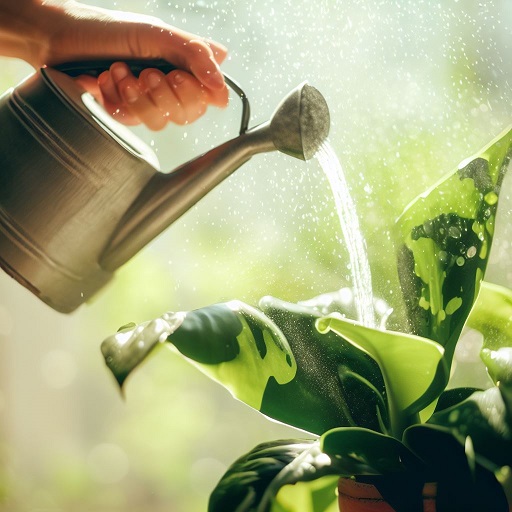
Use the right tools to irrigate the plants because this will not harm the plants and will not turn the soil into hard soil.
You can avoid this by using the right tools, because the soil of the plants is very sensitive and the plant may be damaged by this.
Take some signs seriously during these times and pay close attention to them. Among these symptoms, we can mention the browning of the leaves, the yellowing of the leaves, you can prevent these events with proper irrigation.
Try to get your plants used to these conditions. You can get your plants used to these conditions with deep watering but for a long time so that your plants get used to these conditions.
In this hot season, try to pay attention to the soil moisture of the plants, because this will prevent the plants from wilting and the plants will be healthy and lively, you can maintain the health of your plants.
Mulching
The use of mulches helps the plants in the summer and makes the plants safe from hot waves, and this work is very suitable for the plants.
Mulches help us to maintain soil moisture and prevent water wastage and allow us to maintain plant moisture for a longer period of time.
Of course, you have to choose suitable mulches for your plants, these mulches have different types made of different materials, straw, wood chips and the like. By doing this, you will be calm and you wont have any stress.
Mulches also prevent soil erosion and the soil is not weakened or destroyed, and this is very useful for the plant, they protect the soil against heavy seasonal rains and strong winds, and this is very useful for the plant. Is.
Mulches keep weeds from bothering your plants, and this is very valuable for plants, and as mentioned, when you place mulches at a distance from the plants, you actually cause more moisture than the roots of the plants. And do not make the plant itself vulnerable.
Also, mulches keep pests and diseases away from the plant.
The mulches make the soil temperature to be kept so that the roots of the plants are not damaged by the increase of the soil temperature on hot summer days, and this work is also effective in the cold seasons and helps the plant. Also, when mulches are decomposed, they increase the organic matter and nutrients of the soil, which helps plant growth.
And this work increases the growth rate of the plant, which is very useful for the plant.
Always try to renew your mulches and don’t let them get lost because mulches are very useful for maintaining plants and can help your plant.
With these points that have been said, take the use of mulches very seriously because they help you to preserve your plants in the best way. Always try to use mulches..
Shade
With the arrival of the hot season, try to protect your plants from the heat, this will help your plants a lot. Try to find sources of natural shade in your living environment to protect plants from heat by placing plants there.
This helps the plants to maintain their health. And also try to find the angle of radiation and the direction of sunlight to protect the plants from heat. Always try to move them periodically so that sunlight reaches the plants evenly.
Always try to pay attention to the plants so that they are not damaged, even the plants that are under the shade may be damaged due to high heat.
Try to bring the plants closer to each other under the shade so that they can help each other with the ecosystem they create, and this work is very useful for them.
You should also check out plants that don’t need a lot of sunlight, maybe they are suitable for you and you can use them.
There are a variety of shades that you just have to choose according to where you live.
Even when you place your plants under the shade, you must meet their water needs, because their soil may become dry.
If you have placed your plants in small containers, move them around so the sunlight reaches them.
Always try to choose plants that are compatible with your living environment and they’ll be comfortable with your place and they don’t have any stress.
When you place the plants under the shade, try to establish air flow over them, because if there is no proper air flow, fungal diseases and pests may threaten your plants.
In the summer season, another key point for maintaining plants is to use shade and canopy for plants, so seriously, use them to protect your plants from the intense summer heat.
Pruning
Trimming plants and removing dead and useless branches is one of the best ways to help plants.
Try to always provide good ventilation for the plants, one of the things you can do for better ventilation is to lighten the plant by cutting long and bulky branches and ensure good ventilation for the plant.
Try to separate the yellow and dried leaves from the plant and destroy them, these leaves and branches actually stop the growth of the plant and cause the plant to not grow well.
Try to remove useless leaves and branches from the plants, because they are harmful to the plants.
Try not to cut the plants too much in the summer, this will cause the plants to go into shock and suffer from heatstroke in the summer. Also, try to use appropriate, sharp and clean tools so that the plants are not disturbed and various diseases are not transmitted to them.
You have to make the cuts according to your plant, so before you cut the plants, first check the type of cut they need, so that the plants don’t get into trouble. Try to clean the tool after you cut a plant before using it again for another plant to prevent disease transmission.
Also, when cutting the plant, be careful not to cut the branches that give flowers, because this seriously damages the plant and causes problems with the flowering of the plant.
Trimming the plant is one of the key points for the health of the Shamash plant, so take this task very seriously so that your plant does not suffer..
Use Pots
Storage containers or pots are one of the important and sensitive aspects of plant maintenance. As mentioned in matching plants to pots, they play a crucial role in the health of your plant. One of the advantages of these containers is that they allow you to move the plants, ensuring they receive sunlight uniformly
Always try to use the right soil for your flowers because its so important.
By doing this, the soil inside the container will be damaged and you have to change it.
Try to use a layer of mulch in your pots, this will help maintain the humidity and temperature of your pot and prevent the plant from spoiling.
Try to bring the pots closer to each other so that they can provide the moisture they need by creating an ecosystem, and this work is good for planets.
Try to keep the air circulation in mind and place the pots on something high so that there is air circulation under the pots and prevent the rotting of the roots of the plants.
The pots should be moved periodically so the plants can use sunlight regularly. You should also use the best pot for your plant to minimize damage.
Try to avoid watering too much, because this will cause damage to the plant’s roots and eventually kill your plant, so try to maintain a balance in watering.
How to choose a pot is one of the important points in plant maintenance, so try to choose the best pot and container, because this will help your plant’s health..
Choose Heat-Tolerant Plants
If you live in a hot and dry place, the best option for you, among other things, is to choose plants that can survive in harsh summer conditions.
Choose plants that stay healthy in the heat wave and are almost used to this type of weather, because this is a very important point that you should pay attention to.
You can also choose plants that can store water and use them when necessary. Choose plants that have small leaves or are silver in color, these plants can hold moisture and this will help you a lot. Choose plants that do not need regular care and you can take care of them without frequent visits.
Try to use containers and soils that have good drainage and help you to maintain soil moisture well, and this is very valuable for the plant.
You can also use mulches, which are very useful for plants, mulches can maintain soil temperature and can also maintain soil moisture. And this is very valuable for the plant and you can use it.
Perennials are usually very good options for you.
Because they can have strong roots and this helps your plant to maintain its health. So you can get the best use by choosing resistant plants suitable for your place of residence.
Avoid Fertilizing
One of the key points is fertilizing plants, which you should consider all the points to protect your plants from damage.
Try to avoid fertilizing in the hot season, this will damage the roots and can destroy the plant, it is better to turn to proper irrigation instead of fertilizing, which is much better than indiscriminate fertilizing and can damage the plant.
Find the time of flowering and growth of your plant, by doing this you will realize that you should not give fertilizer to your plants, by doing this you will divert the energy needed for flowering.
If fertilization is very necessary and you want to do this, use fertilizers that have less nutrients and are weaker. If you use strong fertilizers, your plant may be damaged.
Always try to use plants that don’t need much fertilization, some plants like cacti don’t need much fertilizer and survive even in bad weather conditions.
Excessive use of fertilizer causes damage to the soil and thus causes damage to the plant’s roots and causes the plant to die. If you feel that your plant needs fertilization, and its leaves have turned yellow, it is better to stop Check the aspects and finally start fertilizing, because it is very important to find the cause of this problem.
Try to solve this problem by using suitable soils rich in organic matter, and if you want to start fertilizing when the heat is over, try to start with weakened fertilizers to put a lot of pressure on the plants. Do not enter and this is a very important point.
Each plant you prepare has its own special needs, so by researching about that plant, you can find the needs of that plant and this will help you a lot to prevent damage to your plant. By reducing fertilization in the summer, you will keep your plant healthy.
FAQs
1.Why might it be advisable to avoid heavy fertilizing during summer, and how can this practice benefit plants and soil?
Avoid summer fertilization to prevent excessive growth, heat stress, and water demand; it helps maintain plant resilience and soil balance.
2.How does selecting heat-tolerant plants for summer gardening contribute to successful growth, and what benefits do they offer?
Choosing heat-tolerant plants ensures thriving growth, conserves water, and minimizes stress during hot summer months for a vibrant garden.
3.How can using pots or containers in summer gardening enhance flexibility and care, especially in managing water and sunlight exposure?
Using pots provides mobility, control over soil, and better water management, making it easier to adjust conditions for plants’ needs.

